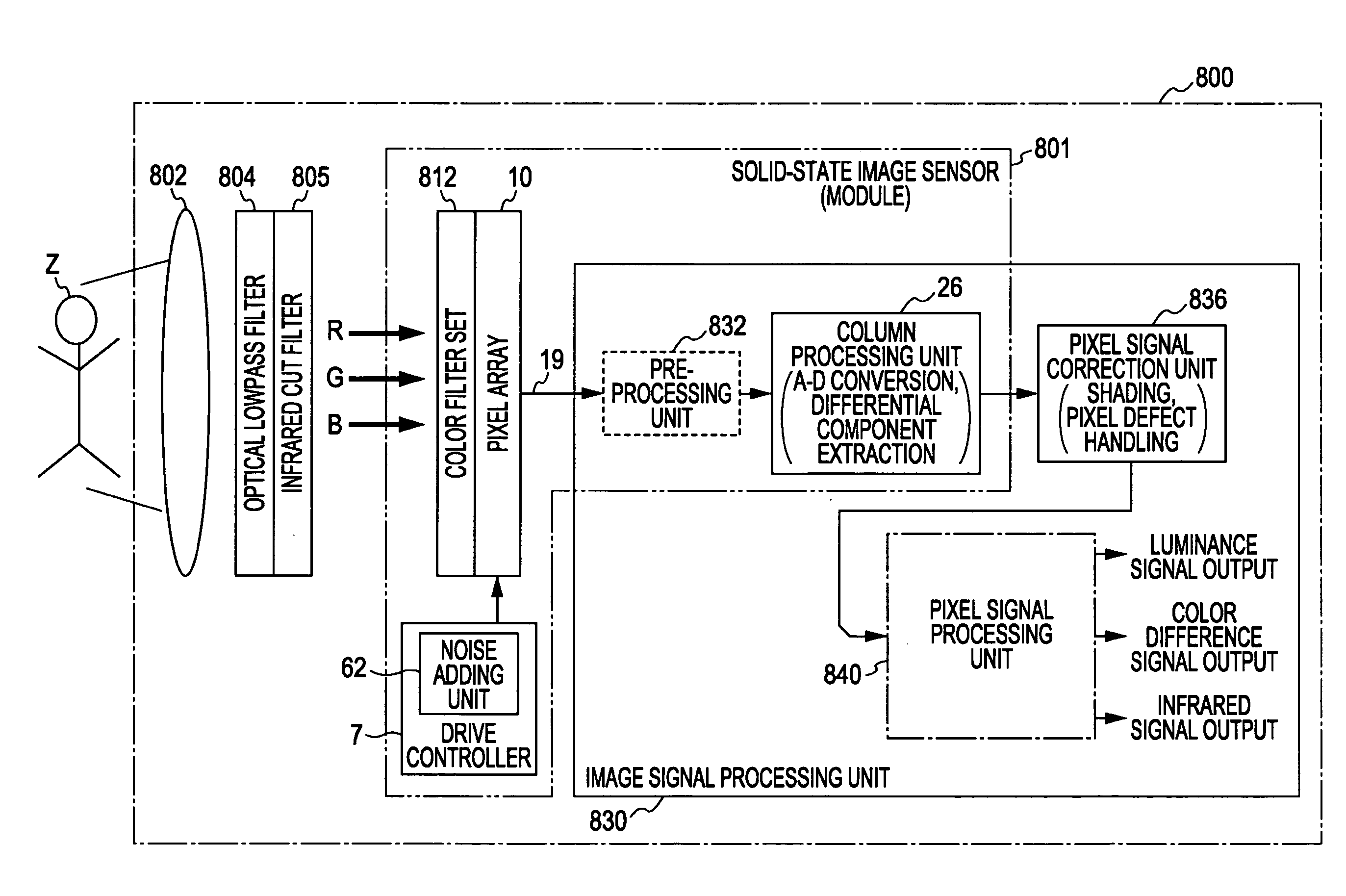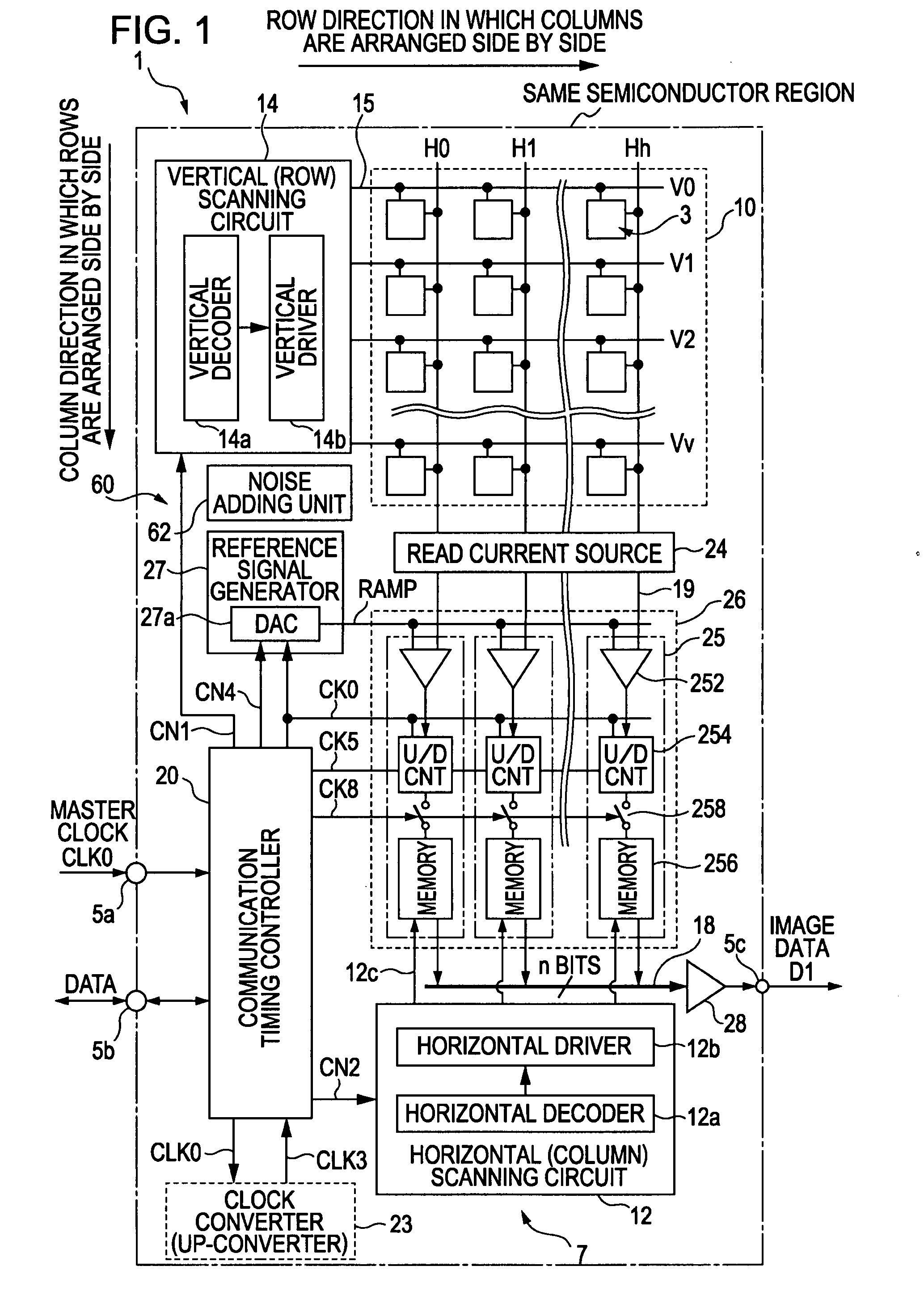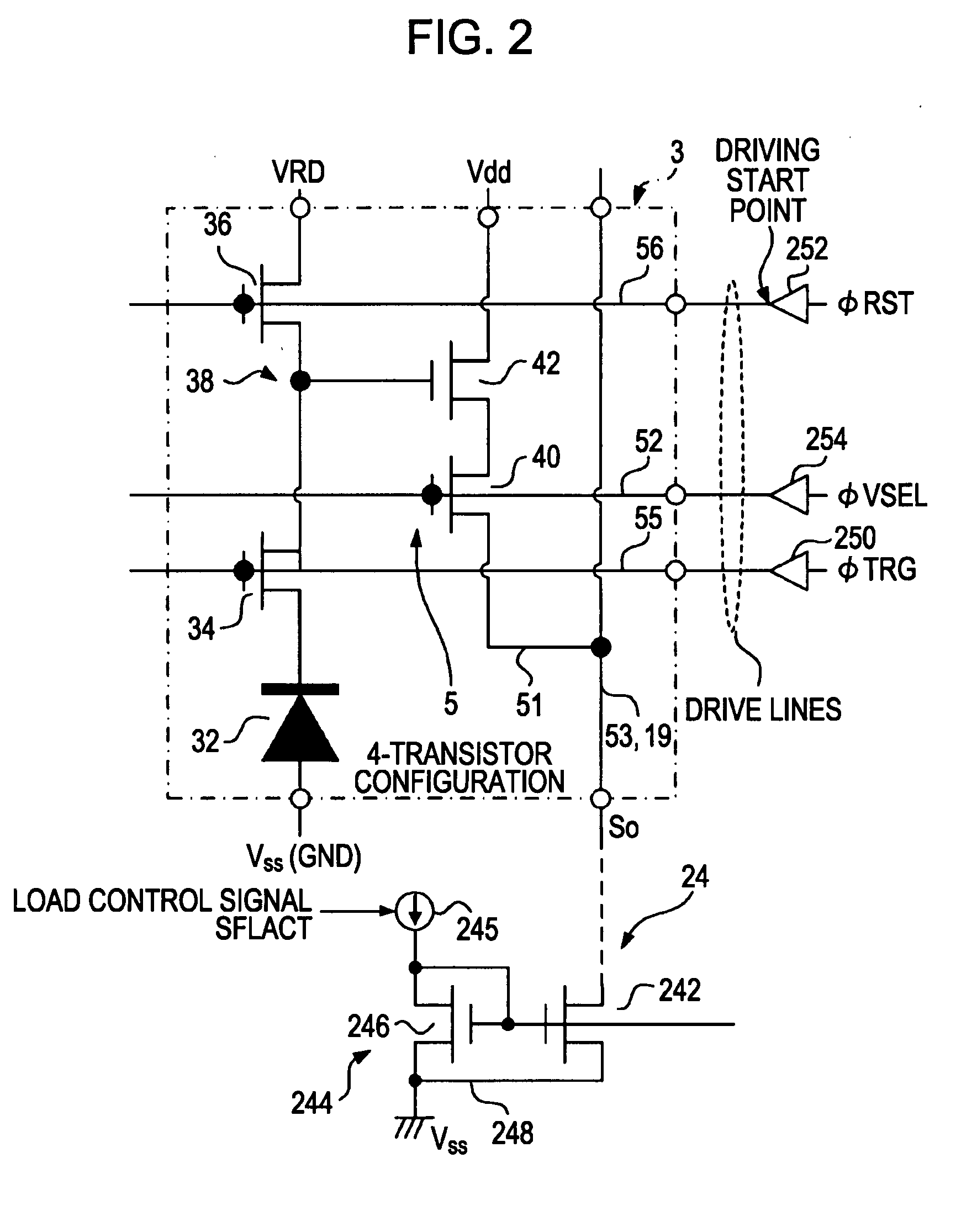Solid-state image sensor and image capturing apparatus
- Summary
- Abstract
- Description
- Claims
- Application Information
AI Technical Summary
Benefits of technology
Problems solved by technology
Method used
Image
Examples
second embodiment
Streak Noise Reduction
[0277]FIGS. 14 and 15 are provided for explanation of a method of reducing streak noise according to a second embodiment. FIG. 14 is a circuit diagram of the noise adding unit 62 disposed in the vertical streak noise reduction unit 60 according to the second embodiment, and FIG. 15 illustrates the operation of the noise adding unit 62.
[0278]The second embodiment is similar to the first embodiment described above in that the reset release interval TRelease is reduced by adjusting the pixel reset pulse RST. However, the difference is in that the adjustment amount is controlled depending on the analog-to-digital conversion gain.
[0279]In the technique according to the first embodiment, the reset release interval TRelease is reduced from the normal length. However, simply use of this technique results in an increase in the variation of the reset level due to the added noise component, which can cause the analog-to-digital conversion for the reset level to become unr...
third embodiment
Streak Noise Reduction
[0296]FIGS. 16 and 17 are provided for explanation of a method of reducing streak noise according to a third embodiment. FIG. 16 is a circuit diagram of the noise adding unit 62 disposed in the vertical streak noise reduction unit 60 according to the third embodiment, and FIG. 17 illustrates the operation of the noise adding unit 62.
[0297]The third embodiment is characterized in that the reset release interval TRelease is reduced by adjusting the comparator reset pulse PSET. In the following discussion, by way of example, the reset release interval TRelease is adjusted depending on the analog-to-digital conversion gain as in the second embodiment. Note that the reset release interval TRelease may be adjusted independently of the analog-to-digital conversion gain as in the first embodiment.
[0298]FIG. 16 illustrates the vertical streak noise reduction unit 60 and associated circuit elements according to the third embodiment. The vertical streak noise reduction un...
fourth embodiment
Streak Noise Reduction
[0312]FIGS. 18 and 19 are provided for explanation of a method of reducing streak noise according to a fourth embodiment. FIG. 18 is a circuit diagram of the noise adding unit 62 disposed in the vertical streak noise reduction unit 60 according to the fourth embodiment, and FIG. 19 illustrates the operation of the noise adding unit 62.
[0313]The fourth embodiment is characterized in that the bias current (the read current applied to each pixel cell 3) applied to each vertical signal line 19 is set to be lower than a value generally employed. In the following explanation, by way of example, the read current is adjusted in synchronization with the analog-to-digital conversion gain as in the second or third embodiment. Note that the fourth embodiment is also applicable to a configuration in which the read current is determined independently of the analog-to-digital conversion gain as in the first embodiment.
[0314]In the vertical streak noise reduction unit 60 accor...
PUM
 Login to View More
Login to View More Abstract
Description
Claims
Application Information
 Login to View More
Login to View More - R&D
- Intellectual Property
- Life Sciences
- Materials
- Tech Scout
- Unparalleled Data Quality
- Higher Quality Content
- 60% Fewer Hallucinations
Browse by: Latest US Patents, China's latest patents, Technical Efficacy Thesaurus, Application Domain, Technology Topic, Popular Technical Reports.
© 2025 PatSnap. All rights reserved.Legal|Privacy policy|Modern Slavery Act Transparency Statement|Sitemap|About US| Contact US: help@patsnap.com



